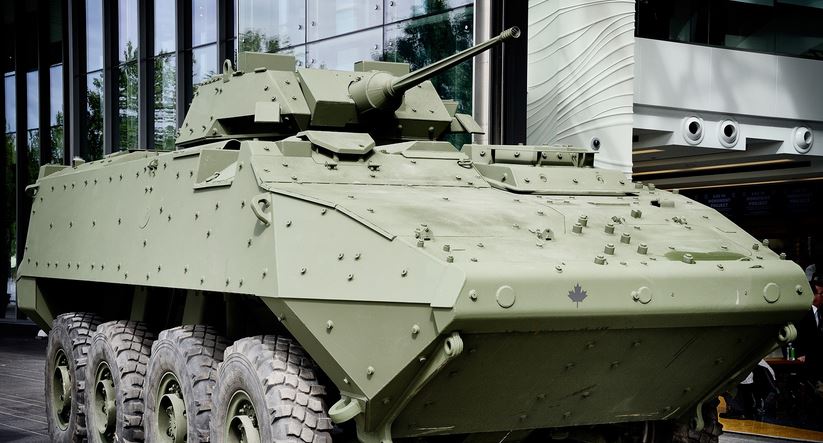Does anyone remember the 2011 LAV III UP project? In 2011, the Government of Canada awarded General Dynamics Land Systems – Canada (GDLS-C) of London, Ontario a contract to upgrade 550 LAV IIIs with an option for an additional 80. The scope of the work included improvement/replacement of mobility systems, weapon systems, seating, and installing additional armour.
In 2012, the Government of Canada announced that the contract was amended to upgrade 66 additional LAV IIIs at a value of $151 million (taxes included) to support the Canadian Armed Forces’ reconnaissance and surveillance capability.
As we have seen, upgraded LAV 6.0s have already been rolled out with much fanfare among the defence crowd. They are, without a doubt, an impressive vehicle that add a tremendous capability to the Canadian Armed Forces. Looking at one up close, it’s clear the upgrades to the LAV IIIs were exhaustive. So complete was the work that almost no visible evidence of the old vehicles remain, but somewhere, hidden deep within the LAV 6.0’s new hulls, or hiding between the gears of the vehicles’ new engines, there lurks the heart of a LAV III. Or maybe not.
It makes you wonder: Where are all these LAV IIIs — the ones set aside for use as memorials across the country — actually coming from? How many surplus LAV IIIs could Canada spare after more than 600 entered the GDLS-C shop and emerged as LAV 6.0s?
That answer comes to us from the lavmonument.ca website: 250. Two-hundred and fifty vehicles, or pieces of vehicles welded back together, will remind Canadians about the sacrifices made by our soldiers during the war in Afghanistan.
Although the initiative is a fitting tribute, it does raise a few questions about procurement. Namely, if there are hundreds of LAV III hulls cut-up and strewn around a yard somewhere in Ontario, what’s the definition of “upgrade”?
While this program has many similarities to the Bluenose II upgrade (the Bluenose II was covered, chopped-up with chainsaws, pieces were put into a chipper, and the resultant mess was shipped to a landfill), why would the government call the replacement of worn-out LAV IIIs an upgrade program?
Most of us know the answer to that: If the program went to a competition, odds are good that the Army would have been left stranded without a light armoured vehicle fleet for years (and years, and years). The government didn’t trust their own system… and decided to play it safe.
The only thing that’s confusing is why they didn’t do the same thing the Nova Scotia government did with the old Bluenose II — destroy all the evidence. Using LAVs for monuments that are supposed to be in service will invariably lead to uncomfortable questions.

